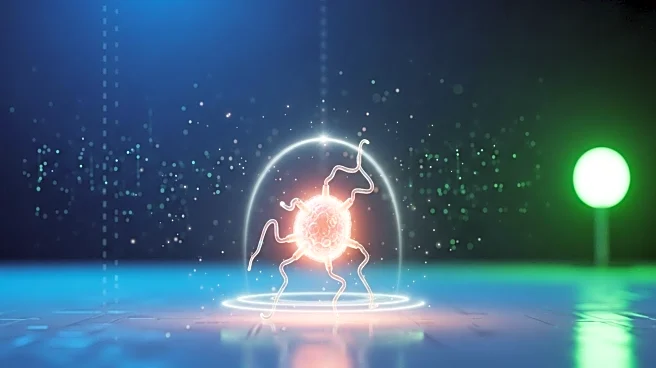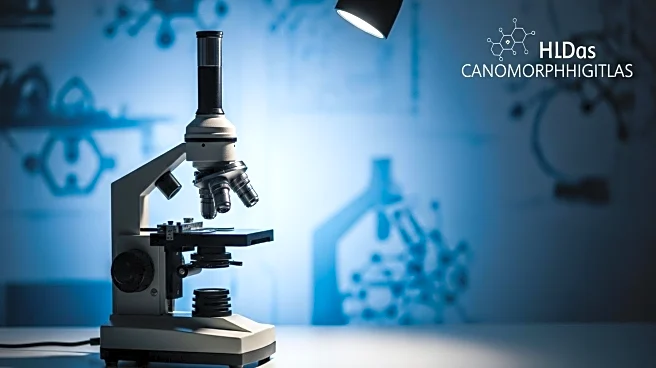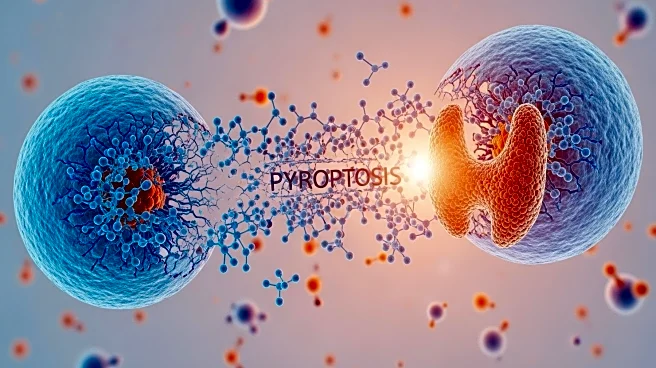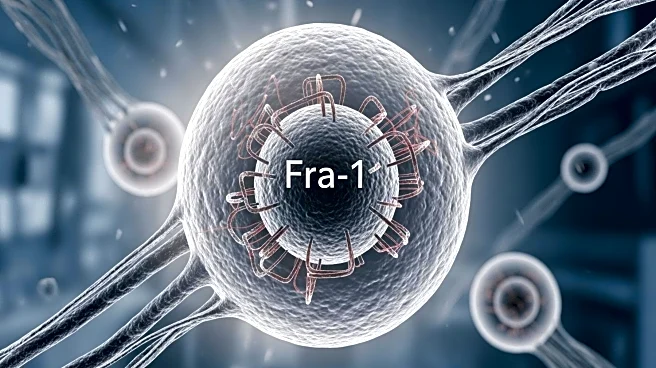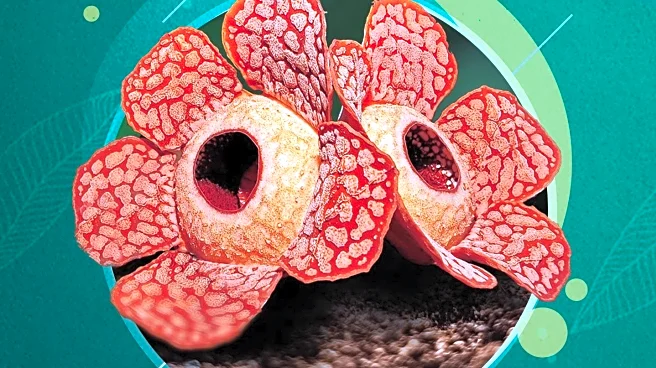What is the story about?
What's Happening?
A recent study has investigated the expression of prostate-specific membrane antigen (PSMA) in intraductal carcinoma of the prostate (IDC-P) using histology and [68Ga]Ga-PSMA-11 PET/CT imaging. The findings indicate that IDC-P exhibits significantly lower PSMA expression compared to conventional prostate adenocarcinoma. This was confirmed by lower PSMA uptake on PET/CT scans. The study suggests that IDC-P lesions occur at advanced stages of tumor progression, often alongside high-grade invasive prostate cancer. Despite IDC-P's aggressive nature, it shows lower histological PSMA expression, contrary to initial expectations. The study highlights the potential of PSMA PET/CT as a non-invasive tool for identifying IDC-P, although it lacks sufficient accuracy for definitive diagnosis without integration with clinical characteristics and MRI findings.
Why It's Important?
The study's findings are significant for the diagnosis and treatment of prostate cancer, particularly IDC-P, which is a highly aggressive subtype. The lower PSMA expression in IDC-P challenges existing diagnostic methods, emphasizing the need for improved imaging techniques. The use of PSMA PET/CT could enhance non-invasive identification of IDC-P, potentially leading to more accurate diagnoses and tailored treatment strategies. This research could influence future diagnostic protocols and encourage the development of hybrid imaging approaches, such as integrated PET/MRI, to improve diagnostic accuracy and patient outcomes.
What's Next?
Future studies are expected to explore alternative imaging modalities to improve the diagnostic accuracy of IDC-P. The development of predictive models incorporating PSMA/PET imaging parameters could aid in identifying IDC-P more reliably. Additionally, further research is needed to understand the biological implications of lower PSMA expression in IDC-P and its role in tumor progression. Larger, multi-center studies are necessary to validate these findings and assess their clinical utility, particularly in overcoming limitations such as false negatives.
Beyond the Headlines
The study raises questions about the biological role of PSMA expression in IDC-P and its implications for tumor behavior. The distinct histological architecture of IDC-P, characterized by dense cribriform and solid structures, may contribute to its lower PSMA uptake. Understanding these nuances could lead to more effective therapeutic strategies and highlight the importance of personalized medicine in oncology.
AI Generated Content
Do you find this article useful?





